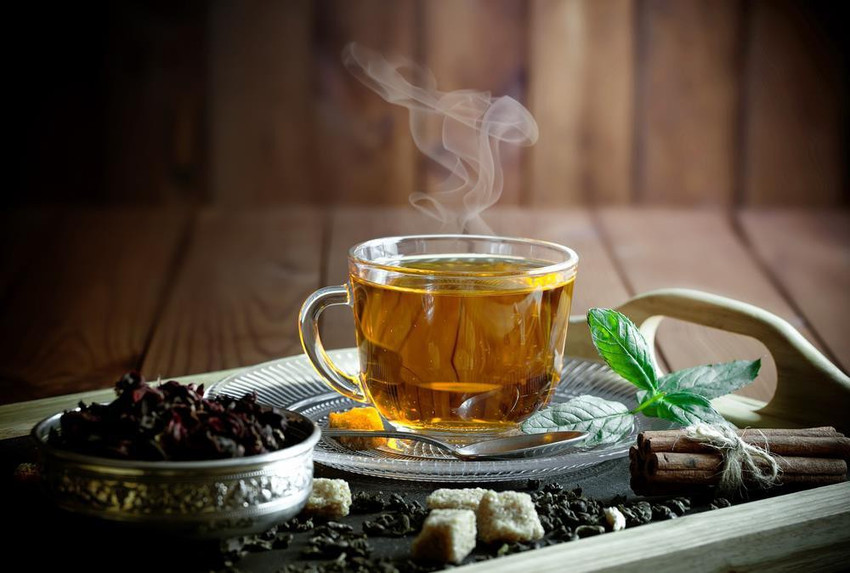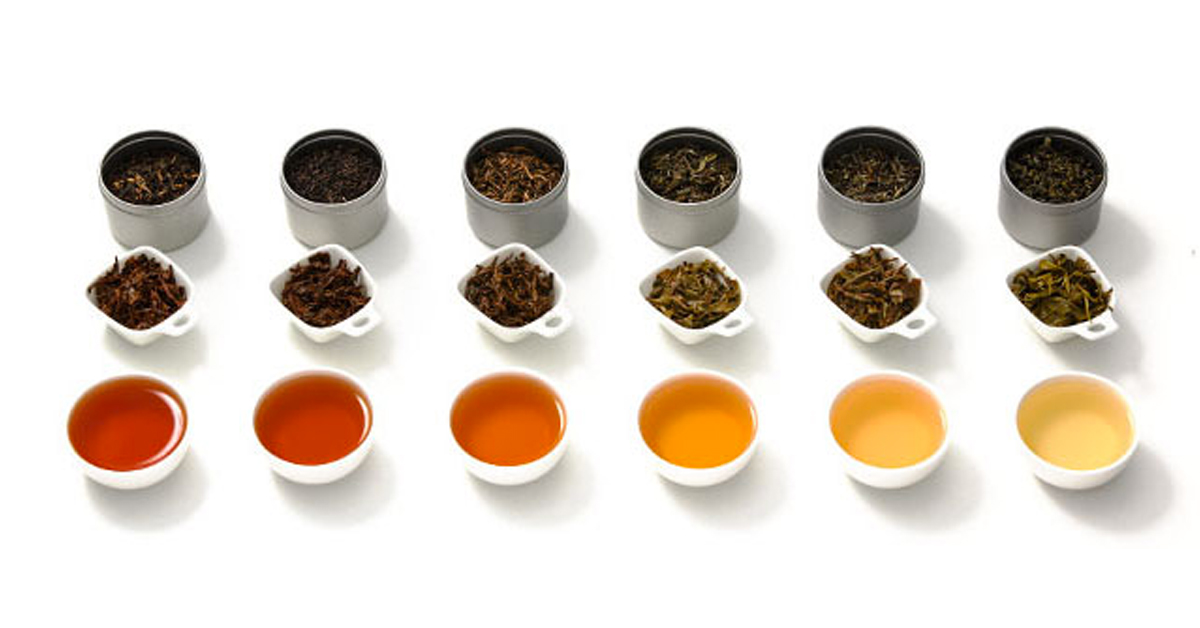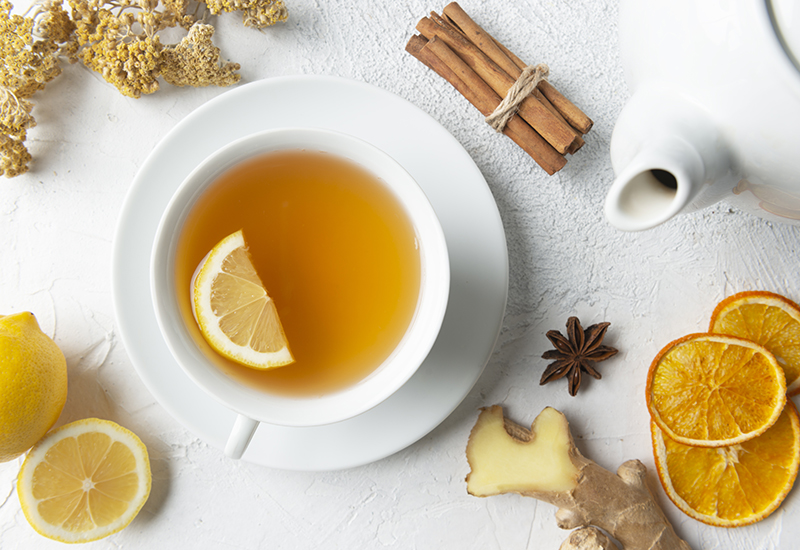The Art of Tea Blending: Creating Unique Flavors and Herbal Infusions
Tea, a timeless beverage, has been cherished across cultures for centuries. From the ceremonial practices in Japan to the casual afternoon tea in England, the act of brewing and savouring tea transcends mere consumption—it becomes an experience, a ritual, and for many, a passion. But what if you could take that experience a step further? What if you could create your own unique blends, infusing them with flavours and herbs that speak to your personal tastes and health needs? Welcome to the fascinating world of tea blending.
What is Tea Blending?
Tea blending is the art and science of combining different tea leaves, herbs, spices, and other botanicals to create a harmonious and balanced flavour profile. Whether you're crafting a calming herbal infusion or a bold, energizing black tea, the goal is to find the perfect balance between the various ingredients. It's a process that requires creativity, an understanding of flavour profiles, and, of course, a passion for tea.
Blending tea is not just about mixing different ingredients together; it's about creating something greater than the sum of its parts. Each ingredient in a blend plays a specific role, whether it's adding flavour, aroma, or even health benefits. The art of tea blending lies in knowing how to balance these elements to create a tea that is not only delicious but also unique.
The Key Aspects of Tea Blending
1. Understanding Tea Bases
The foundation of any tea blend is the base tea. This is typically a single type of tea leaf that provides the primary flavour profile. The most common base teas are:
- Black Tea: Known for its robust and bold flavour, black tea serves as a strong base that can hold its own against strong flavours like spices and fruits.
- Green Tea: Milder and more delicate, green tea is often used as a base for blends that incorporate floral or fruity notes.
- White Tea: The lightest and most subtle of the teas, white tea is ideal for blends that focus on delicate flavours and aromas.
- Oolong Tea: With a flavour profile that falls between black and green tea, oolong is versatile and can be used as a base for a wide range of blends.
- Herbal Tea: Technically not a true tea, herbal teas like rooibos, chamomile, and peppermint are caffeine-free and can be used as bases for soothing, caffeine-free blends.
The choice of base tea sets the tone for the entire blend, so it's important to choose one that complements the other ingredients.
2. The Role of Flavoring Agents
Once you've chosen your base tea, the next step is to select the flavouring agents. These can be anything from dried fruits and flowers to spices and herbs. The key is to choose ingredients that enhance the flavour of the base tea rather than overpower it.
- Fruits: Dried fruits like berries, citrus peels, and apples add a natural sweetness and tartness to the blend.
- Flowers: Floral notes from ingredients like jasmine, rose petals, and lavender can add a delicate, aromatic quality to the tea.
- Spices: Spices like cinnamon, cardamom, and ginger add warmth and complexity to the blend.
- Herbs: Herbs like mint, basil, and lemongrass can add freshness and a herbal depth to the tea.
It's important to experiment with different combinations to find the perfect balance. For example, a black tea base with cinnamon and orange peel creates a warming, comforting blend, while a green tea base with jasmine and lemongrass offers a light, refreshing experience.
3. Balancing Flavors and Aromas
The art of tea blending is all about balance. A successful blend should have a harmonious balance of flavours and aromas, with no single ingredient overpowering the others. This requires a deep understanding of how different ingredients interact with each other.
For example, when blending a tea with both floral and spicy notes, it's important to ensure that the floral notes don't get lost in the spiciness. This might involve using a lighter hand with the spices or choosing a floral ingredient with a stronger aroma. Another important aspect of balancing a blend is considering the texture of the tea. Some ingredients, like spices and certain herbs, can add a slight astringency or dryness to the tea. This can be balanced by adding ingredients that contribute a smoother, more rounded mouthfeel, like dried fruits or vanilla.
4. The Importance of Quality Ingredients
The quality of the ingredients you use in your tea blends is crucial. Fresh, high-quality ingredients will result in a tea that is more flavorful, aromatic, and visually appealing. When possible, opt for organic ingredients that are free from pesticides and other chemicals.
It's also important to store your ingredients properly to preserve their freshness. Tea leaves should be stored in airtight containers away from light, heat, and moisture. Herbs, spices, and dried fruits should also be stored in airtight containers to prevent them from losing their flavour and aroma.
The Relevance of Tea Blending in Today’s World
In an age where individuality and wellness are highly valued, tea blending offers a unique way to express both. Creating your own tea blends allows you to tailor your tea to your specific tastes and needs, whether you're looking for a soothing herbal infusion to wind down after a long day or an energizing black tea to kickstart your morning.
Tea blending also offers a way to incorporate more natural, health-promoting ingredients into your diet. Many herbs and spices used in tea blending have been used for centuries in traditional medicine for their health benefits. For example, ginger is known for its anti-inflammatory properties, while peppermint can aid digestion. By creating your own blends, you can enjoy these benefits deliciously and conveniently. Moreover, tea blending is a sustainable practice. By creating your own blends, you can reduce the need for pre-packaged teas, which often come in non-recyclable packaging. You can also support local farmers and businesses by sourcing your ingredients from local markets or growing your own herbs and spices.
A Step-by-Step Guide to Creating Your Own Tea Blend
Ready to start blending your own teas? Here's a simple guide to get you started:
1. Choose Your Base Tea:
Start with a single type of tea leaf as your base. Consider what kind of experience you want—something bold and energizing or light and calming?
2. Select Your Flavoring Agents:
Choose 2-3 ingredients that will complement your base tea. Think about the flavour profile you want to achieve—do you want it to be fruity, floral, spicy, or herbal?
3. Experiment with Ratios:
Start with small amounts of each ingredient and adjust the ratios until you find a blend that you like. A good starting point is 1 teaspoon of base tea to 1/2 teaspoon of each flavouring agent.
4. Blend and Store:
Once you've found the perfect blend, mix the ingredients thoroughly and store the blend in an airtight container.
5. Brew and Enjoy:
Use 1-2 teaspoons of your blend per cup of water. Brew according to the instructions for the base tea you've chosen, and enjoy!
Anecdotes and Examples from the World of Tea Blending
One of the joys of tea blending is that it's a deeply personal and creative process. Here are a few stories from tea enthusiasts who have discovered the art of blending:
Emily's Evening Ritual:
Emily, a busy mother of two, struggled with winding down after her hectic days. She started blending her own teas as a way to create a calming evening ritual. Her favourite blend is a chamomile base with lavender and a hint of vanilla. "It's like a hug in a cup," she says. "It helps me relax and transition from the chaos of the day to the peace of the night."
John's Morning Kickstart:
John, an entrepreneur, needed a natural way to boost his energy and focus in the mornings. He experimented with different blends and eventually created one with a black tea base, ginger, and lemon peel. "It gives me the kick I need without the jitters," he explains. "Plus, the ginger helps with digestion, so I feel great all day."
Sophia's Creative Journey:
Sophia, an artist, found that tea blending became an extension of her creative process. She started blending teas with different colours and aromas to match her mood and the season. Her current favourite is a white tea base with rose petals and hibiscus. "It's like drinking a work of art," she says. "The colours are beautiful, and the flavour is delicate and floral—perfect for inspiring my creativity."
Conclusion: The Endless Possibilities of Tea Blending
The art of tea blending offers endless possibilities for creativity, self-expression, and wellness. Whether you're looking to create a soothing herbal infusion or a bold, energizing brew, the process of blending your own teas allows you to craft a beverage that is uniquely yours. With a little experimentation and a lot of passion, you can discover blends that not only taste amazing but also enhance your well-being. So why not start your own tea-blending journey? Whether you're a seasoned tea drinker or a curious beginner, there's something magical about creating your own blend and sipping a tea that you've crafted with your own hands. And who knows your next favourite tea blend might just be one that you create yourself.
Dive into the world of tea blending and let your creativity flow. The possibilities are as limitless as your imagination. Happy blending!







Comments
Post a Comment